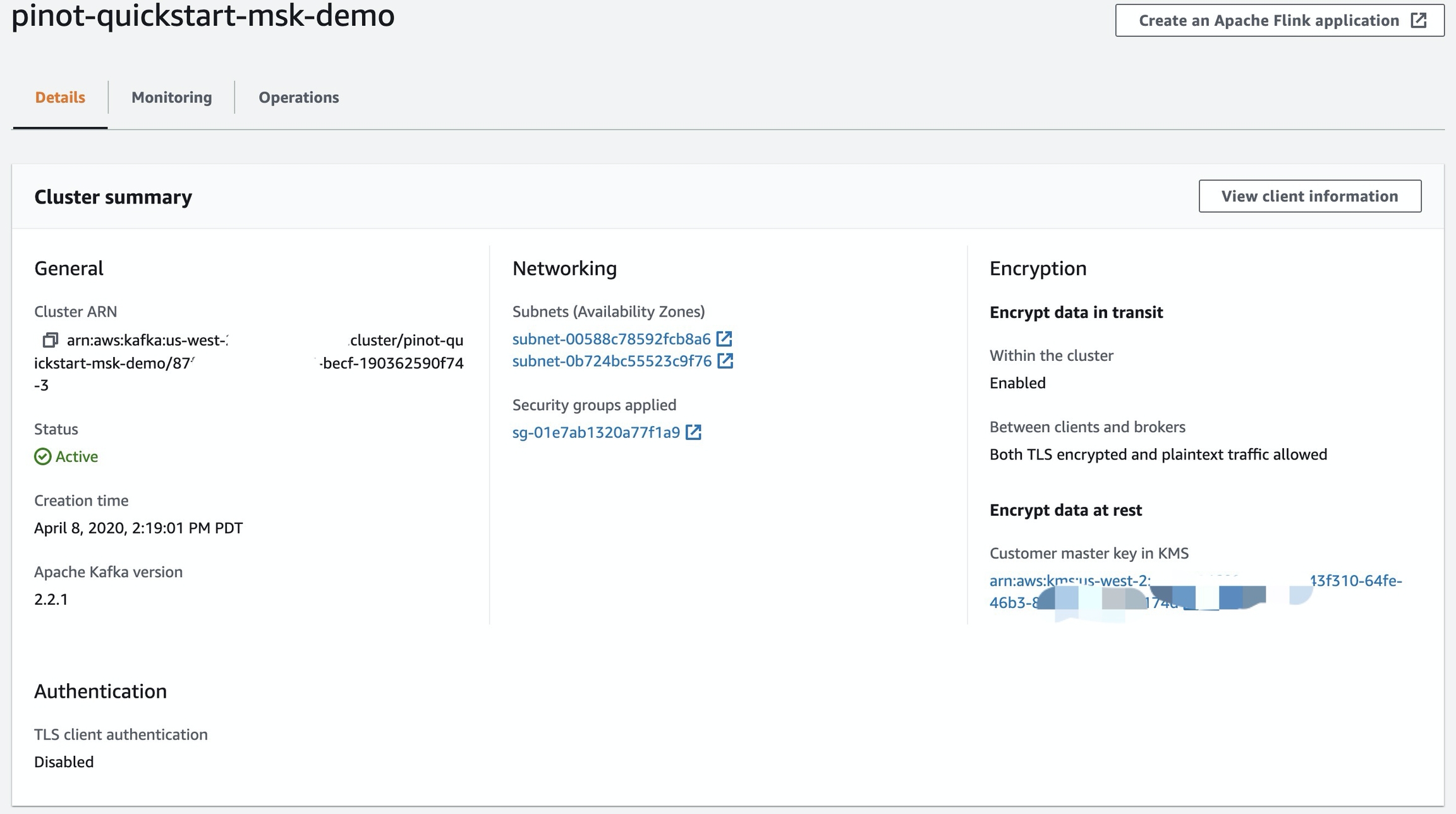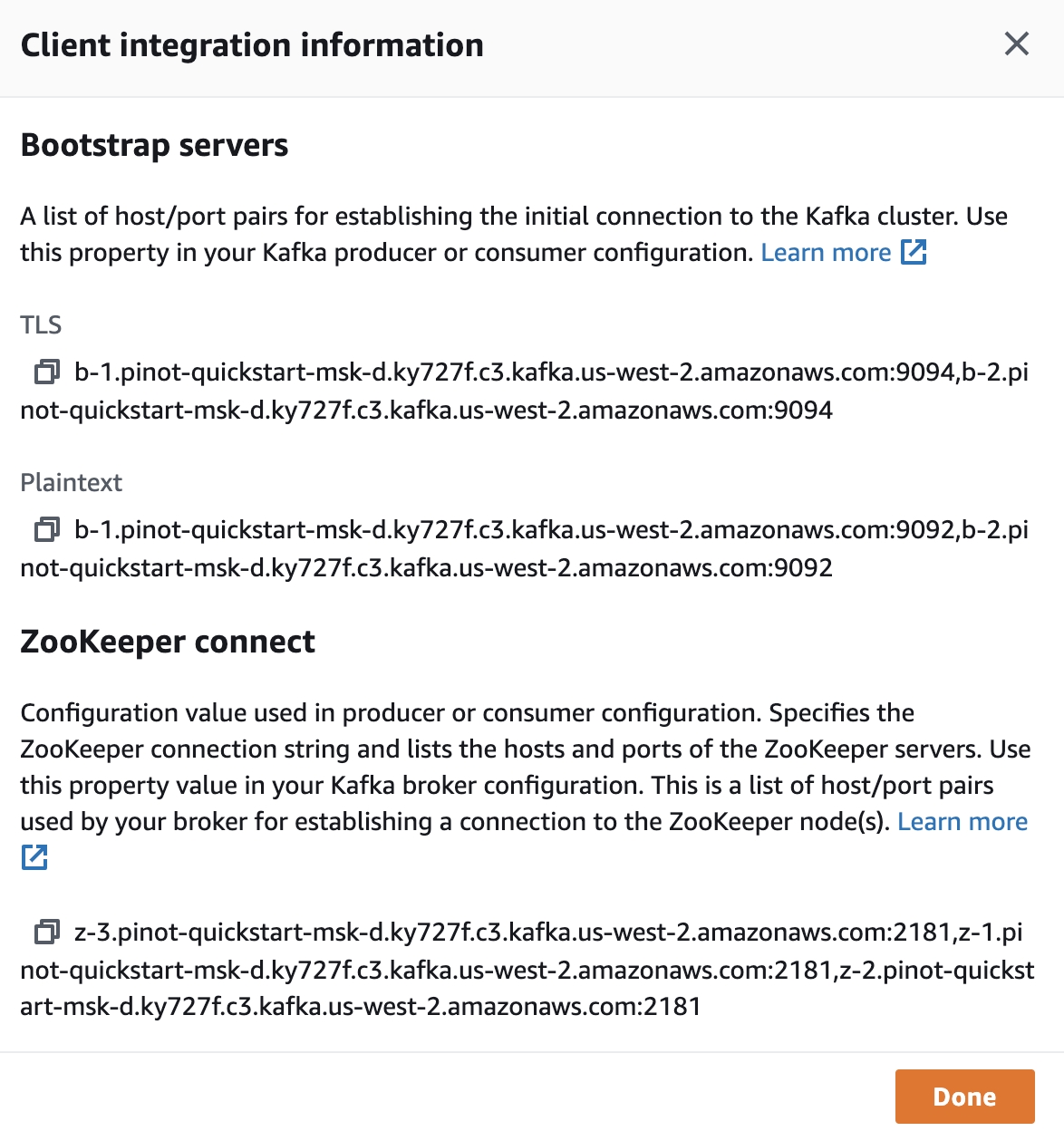Amazon MSK (Kafka)
How to Connect Pinot with Amazon Managed Streaming for Apache Kafka (Amazon MSK)
This wiki documents how to connect Pinot deployed in Amazon EKS to Amazon Managed Kafka.
Prerequisite
Follow this AWS Quickstart Wiki to run Pinot on Amazon EKS.
Create an Amazon MSK Cluster
Go to MSK Landing Page to create a Kafka Cluster.
Click Create. b
Once the cluster is created, click
View client informationto see the Zookeeper and Kafka Broker list.

Sample Client Information

Connect to MSK
Config SecurityGroup
Until now, the MSK cluster is still not accessible, you can follow this Wiki to create an EC2 instance to connect to it for topic creation, run console producer and consumer.
In order to connect MSK to EKS, we need to allow the traffic could go through each other.
This is configured through Amazon VPC Page.
Record the Amazon MSK
SecurityGroupfrom the Cluster page, in the above demo, it'ssg-01e7ab1320a77f1a9.Open Amazon VPC Page, click on
SecurityGroupson left bar. Find the EKS Security group:eksctl-${PINOT_EKS_CLUSTER}-cluster/ClusterSharedNodeSecurityGroup.

In SecurityGroup, click on MSK SecurityGroup (
sg-01e7ab1320a77f1a9), then Click onEdit Rules, then add aboveClusterSharedNodeSecurityGroup(sg-0402b59d7e440f8d1) to it.

Click EKS Security Group
ClusterSharedNodeSecurityGroup(sg-0402b59d7e440f8d1), add In bound Rule for MSK Security Group (sg-01e7ab1320a77f1a9).

Now, EKS cluster should be able to talk to Amazon MSK.
Create Kafka topic
To run below commands, ensure you set two environment variable with ZOOKEEPER_CONNECT_STRING and BROKER_LIST_STRING (Use plaintext) from Amazon MSK client information, and replace the Variables accordingly.
E.g.
You can log into one EKS node or container and run below command to create a topic.
E.g. Enter into Pinot controller container:
Then install wget then download Kafka binary.
Create a Kafka topic:
Topic creation succeeds with below message:
Write sample data into Kafka
Once topic is created, we can start a simple application to produce to it.
You can download below yaml file, then replace:
${ZOOKEEPER_CONNECT_STRING}-> MSK Zookeeper String${BROKER_LIST_STRING}-> MSK Plaintext Broker String in the deployment${GITHUB_PERSONAL_ACCESS_TOKEN}-> A personal Github Personal Access Token generated from here, grant all read permissions to it. Here is the source code to generate Github Events.
And apply the YAML file by.
Once the pod is up, you can verify by running a console consumer to read from it.
Create a Pinot table
This step is relatively easy.
Since we already put table creation request into the ConfigMap, we can just enter into pinot-github-events-data-into-msk-kafka pod to execute the command.
Check if the pod is running:
Sample output:
Enter into the pod
Create Table
Sample output:
Then you can open Pinot Query Console to browse the data

Was this helpful?

